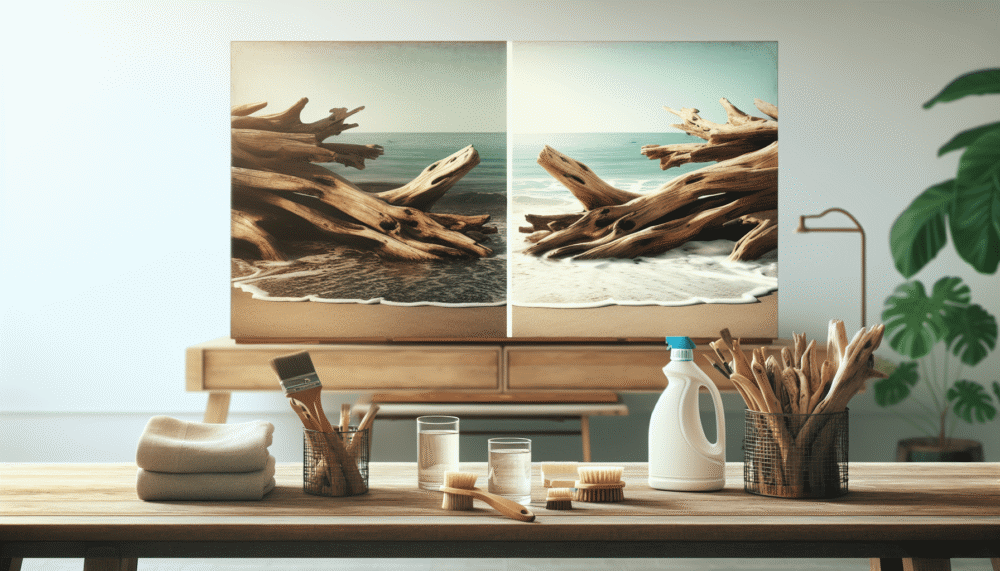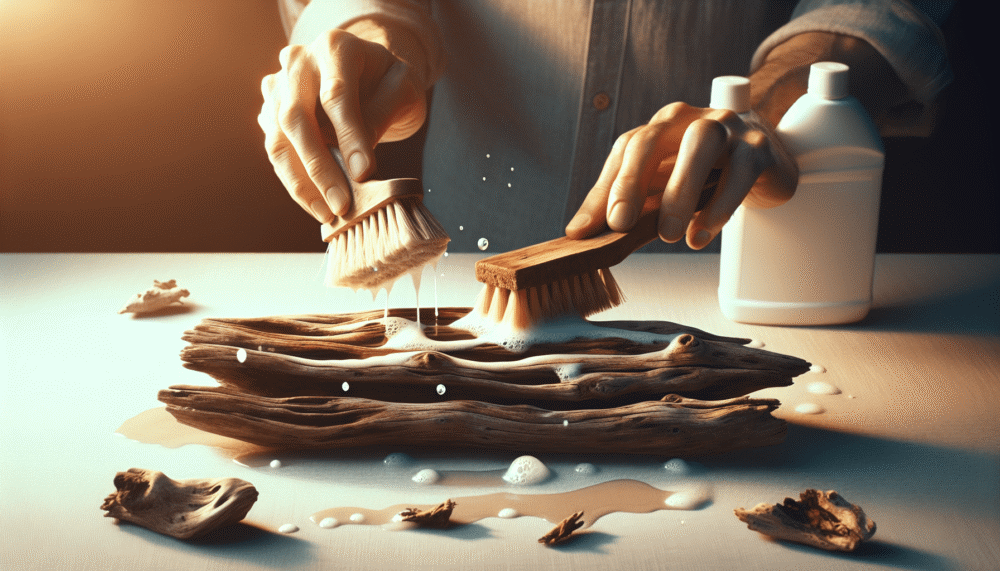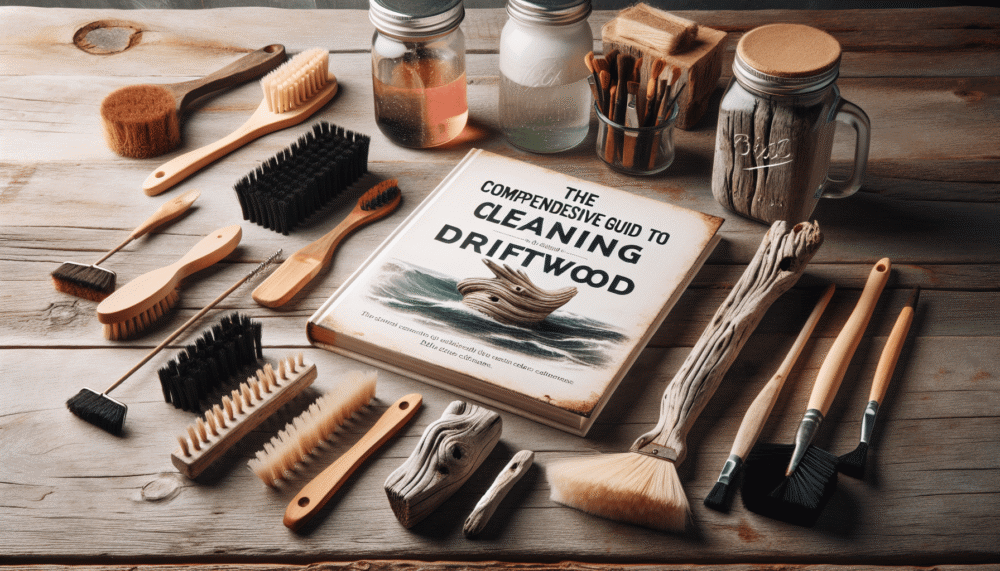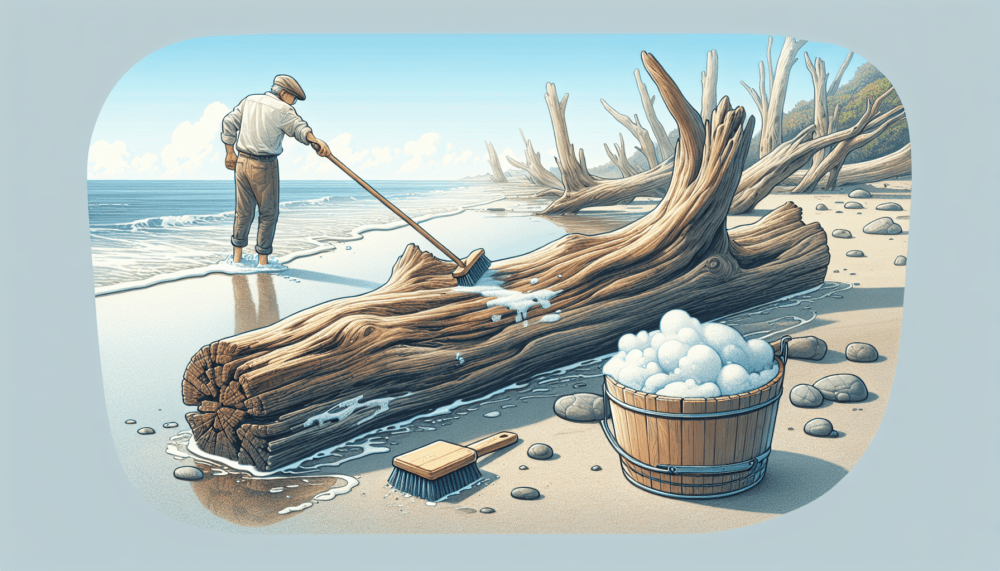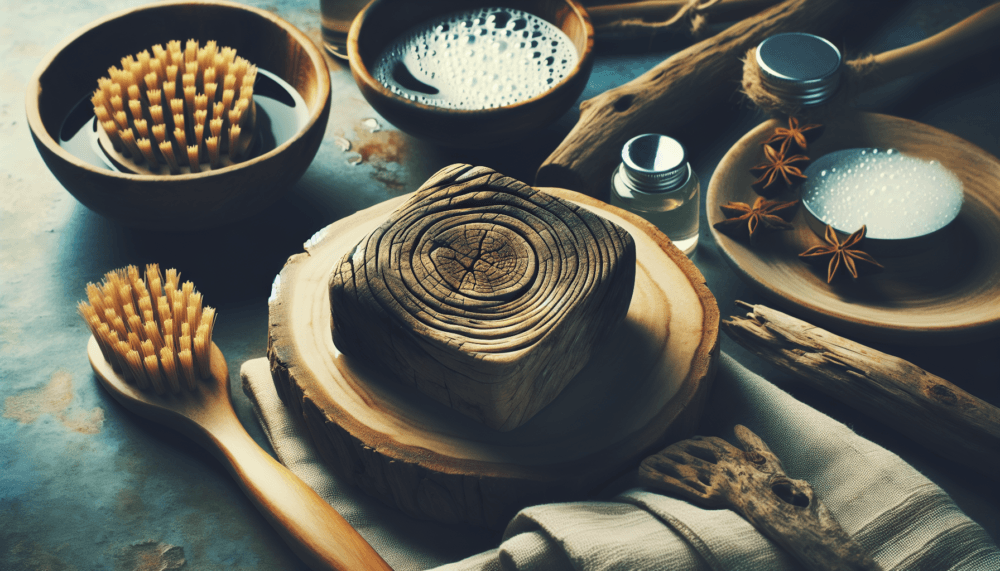Have you ever stumbled upon a beautiful piece of driftwood during a beach walk and thought it would make a perfect addition to your indoor decor? If so, you may be wondering how to clean that piece of driftwood properly before bringing it inside your home. Rest assured, the process is simple and can be done with just a few materials. In this article, we’ll guide you on how to clean driftwood for indoor use, ensuring that your newfound treasure is ready to be showcased in your home.
Gathering Driftwood
When it comes to gathering driftwood, the first thing you need to do is find a suitable location. Coastal areas, riversides, and lakeshores are often great places to start your search. Keep in mind that you should always check and follow any local regulations regarding collecting driftwood, as some areas may have restrictions.
Finding Driftwood
Once you’ve chosen your gathering spot, take a leisurely stroll along the shoreline or riverbank. Keep your eyes peeled for pieces of driftwood that catch your interest. Look for unique shapes, interesting textures, and sturdy pieces that are in good condition. Remember, the best driftwood is often weathered and worn, with a smooth patina that adds to its charm.
Choosing the Right Driftwood
When selecting driftwood, there are a few key things to consider. First, make sure the piece is free from any signs of rot or decay. You want to choose driftwood that is still solid and structurally sound. Additionally, think about the size and shape of the driftwood in relation to your intended use. If you’re looking for a statement piece, you might opt for larger, more dramatic driftwood. For smaller accents, choose pieces that are more petite and delicate.
Preparing Driftwood for Cleaning
Before you can start the cleaning process, it’s important to prepare the driftwood by removing any loose debris and soaking it to soften stubborn dirt and grime.
Removing Loose Debris
Begin by using a stiff brush or your hands to remove any loose debris from the surface of the driftwood. This includes things like sand, leaves, or smaller pieces of wood that may have become lodged in crevices. Gently brush or shake the driftwood to dislodge these materials, taking care not to damage the wood in the process.
Soaking Driftwood
Next, fill a large container, such as a bathtub or a basin, with warm water. Place the driftwood in the water, making sure it is fully submerged. Allow the driftwood to soak for several hours or overnight. This soaking process will help to loosen and soften any remaining dirt or debris, making it easier to clean later on.
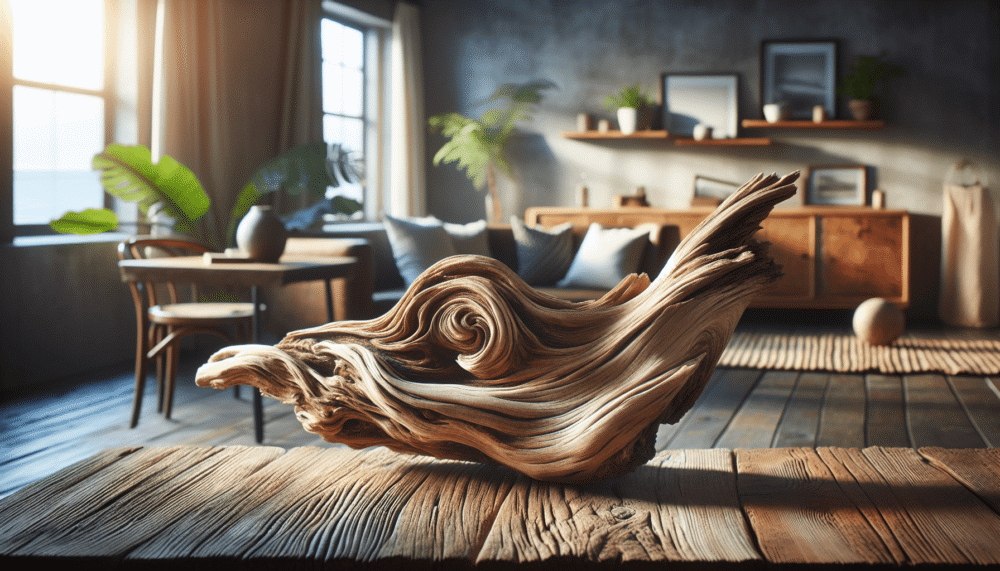
Scrubbing Driftwood
Once the driftwood has been properly prepared, it’s time to start scrubbing away any remaining dirt and grime. This step will ensure that your driftwood is not only clean but also free from any potential odor.
Using a Brush
Using a brush with stiff bristles, gently scrub the surface of the driftwood. Work in a circular motion, paying extra attention to any particularly dirty or stained areas. The brush will help to dislodge dirt and grime from the wood’s textured surface. Rinse the brush frequently to remove any debris that may accumulate.
Cleaning Hard-to-Reach Areas
For hard-to-reach areas or intricate designs, you may need to use a smaller brush or a toothbrush. These tools allow you to get into all the nooks and crannies of the driftwood and ensure a thorough cleaning. Take your time and be gentle to avoid damaging the wood during this process.
Removing Stains and Odor
After scrubbing, you may still notice some stubborn stains or lingering odors. Don’t worry – there are effective ways to tackle these issues and restore your driftwood to its full glory.
Using a Vinegar Solution
To remove stains and neutralize odors, create a solution of equal parts white vinegar and water. Dip a clean cloth or sponge into the solution and gently wipe down the surface of the driftwood. The acidity of the vinegar helps to break up tough stains and eliminate any unwanted odors. Allow the driftwood to air dry after using the vinegar solution.
Bleaching Driftwood
If the stains on your driftwood are especially stubborn or if you prefer a brighter, more uniform look, you can consider bleaching the wood. Mix a solution of one part bleach to ten parts water and apply it to the driftwood using a brush or sponge. Be sure to wear gloves and work in a well-ventilated area when using bleach. Allow the solution to sit on the driftwood for a few minutes before rinsing thoroughly with water. This process may lighten the color of the wood and remove some of its natural patina.
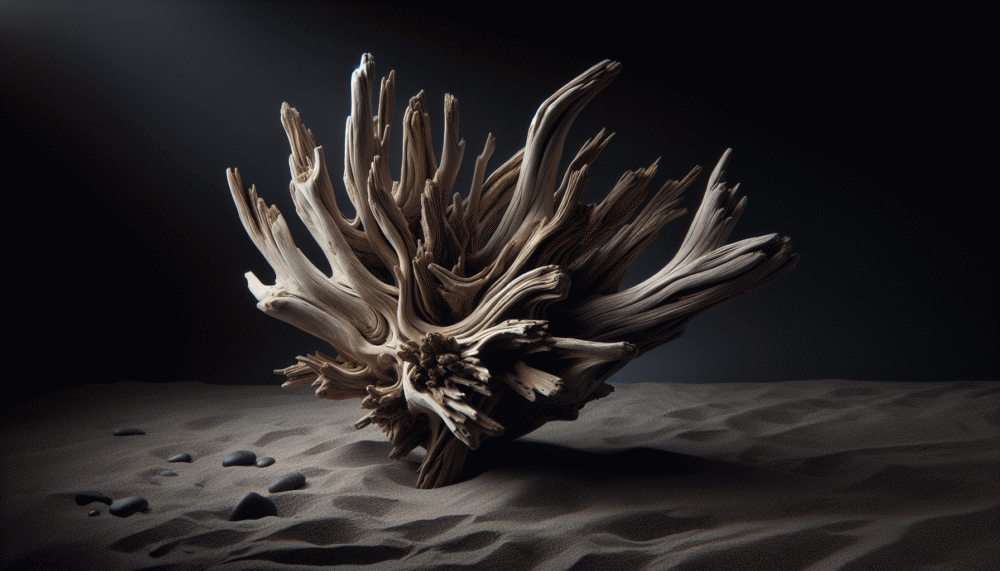
Drying Driftwood
Once the cleaning process is complete, it’s important to ensure that your driftwood is thoroughly dried before moving on to the next steps. Proper drying helps to prevent mold and decay.
Air Drying
The simplest method of drying driftwood is to let it air dry naturally. Place the cleaned driftwood in a well-ventilated area, preferably outdoors or near an open window. Allow the wood to dry completely, which may take several days or longer depending on the size and thickness of the driftwood. It’s important to note that air drying may result in some slight warping or cracking of the wood, especially if it’s exposed to direct sunlight or extreme temperatures.
Baking in the Oven
If you prefer a faster drying method or want to minimize the risk of warping, you can use your oven to dry the driftwood. Preheat the oven to a low temperature, around 200°F (90°C). Place the driftwood on a baking sheet lined with aluminum foil to catch any drips. Bake the driftwood in the oven for several hours, checking periodically to ensure that it’s drying evenly and not becoming too hot. Remove the driftwood from the oven once it’s completely dry and allow it to cool before handling.
Sanding Driftwood
To achieve a smooth and polished finish, sanding is a crucial step in the driftwood cleaning process. Sanding not only removes any rough patches but also helps to reveal the beautiful grain and texture of the wood.
Using Sandpaper
Start by selecting a coarse-grit sandpaper, such as 80 or 100-grit, to remove any remaining roughness on the driftwood’s surface. Sand in the direction of the wood grain using smooth, even strokes. Once the surface feels smooth and any imperfections have been eliminated, switch to a finer-grit sandpaper, such as 220-grit, to achieve a polished finish. Again, sand in the direction of the wood grain, applying light pressure.
Smoothing Rough Edges
In addition to sanding the surface, pay special attention to any rough or jagged edges of the driftwood. Use sandpaper or a sanding block to carefully smooth out these areas, ensuring they blend seamlessly with the rest of the wood. Be patient and take your time to achieve the desired results.
Sealing Driftwood
To protect your cleaned and sanded driftwood and enhance its natural beauty, applying a sealer is highly recommended. A sealer helps to seal the pores of the wood, preventing moisture absorption and reducing the risk of decay.
Choosing a Sealer
When selecting a sealer for your driftwood, opt for a clear, waterproof sealant that is suitable for outdoor use. Look for products specifically designed for wood and choose one that provides UV protection to prevent fading. Test the sealer on a small, inconspicuous area of the driftwood first to ensure it achieves the desired effect.
Applying the Sealer
Before applying the sealer, make sure the driftwood is completely dry and free from any dust or debris. Follow the manufacturer’s instructions for the specific sealer you’re using. Generally, you can use a brush, sponge, or spray bottle to apply an even coat of sealer to the entire surface of the driftwood. Allow the sealer to dry thoroughly before handling or displaying the driftwood.
Displaying Driftwood
Now that your driftwood is clean, dry, and sealed, it’s time to find the perfect spot to display it and incorporate it into your decor.
Choosing a Display Location
Consider the size and shape of your driftwood when choosing a display location. Larger pieces could become a focal point in a living room or entryway, while smaller pieces can be showcased on shelves, mantels, or incorporated into table centerpieces. Take into account the overall theme and style of your space to ensure that the driftwood complements and enhances the existing decor.
Incorporating Driftwood into Decor
Driftwood can be integrated into your decor in various ways. You can use it as a standalone sculpture, hang it on the wall as a unique art piece, or even repurpose it into functional items like candle holders or picture frames. Get creative and experiment with different placements and arrangements to find the perfect way to showcase your driftwood.
Maintaining Driftwood
To keep your driftwood looking its best and ensure its longevity, regular maintenance is key.
Regular Dusting
Dust can accumulate on the surface of driftwood, detracting from its natural beauty. To keep your driftwood clean and dust-free, regularly dust it using a soft cloth or a feather duster. Be gentle to avoid scratching or damaging the wood during this process.
Periodic Re-Sealing
Over time, the protective sealant on your driftwood may wear off or become compromised. To maintain its durability, periodically reapply a new coat of sealer. Follow the same instructions as when initially applying the sealer, making sure the driftwood is clean and dry before proceeding.
Safety Precautions
While cleaning, sanding, and sealing driftwood, it’s important to prioritize your safety and take necessary precautions.
Wearing Gloves
When handling driftwood during the cleaning and sanding processes, it’s advisable to wear gloves. This will help protect your hands from any potential splinters or rough edges, as well as from any chemicals you may be using.
Working in a Well-Ventilated Area
When using cleaning solutions, bleach, or sealers, it’s essential to work in a well-ventilated area. Open windows or doors to ensure proper airflow and minimize exposure to any chemical fumes. If possible, consider wearing a mask to further protect yourself from potentially harmful particles.
By following these comprehensive steps and taking the necessary precautions, you can effectively clean, prepare, and maintain driftwood for indoor use. Embrace the unique beauty of driftwood and let it bring a touch of the coast into your home decor. Enjoy the process of collecting, cleaning, and transforming this natural treasure into a captivating element in your living space.


